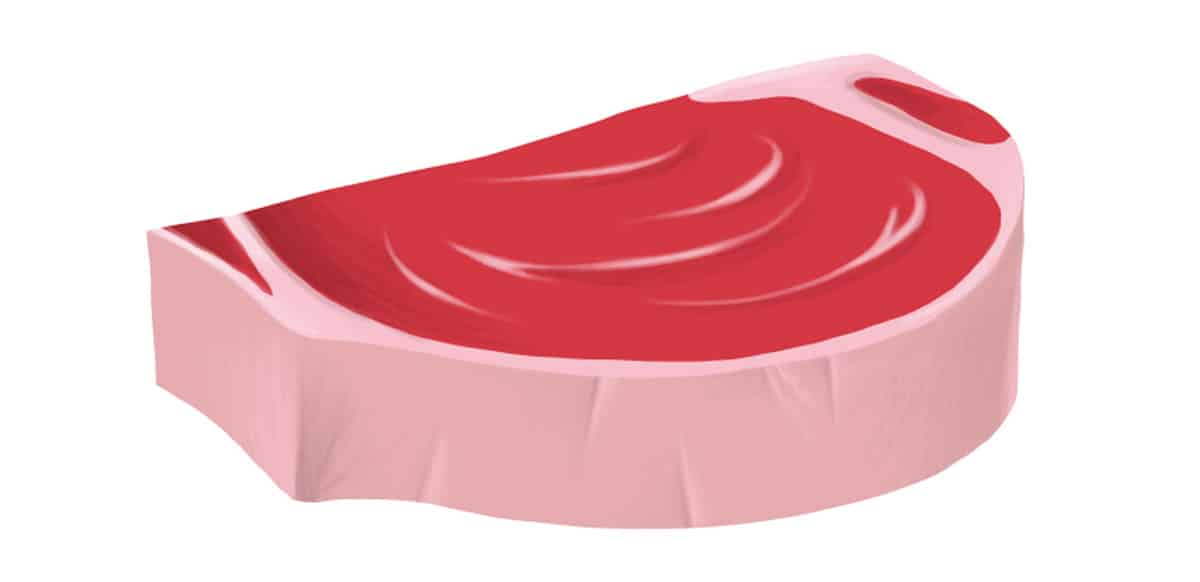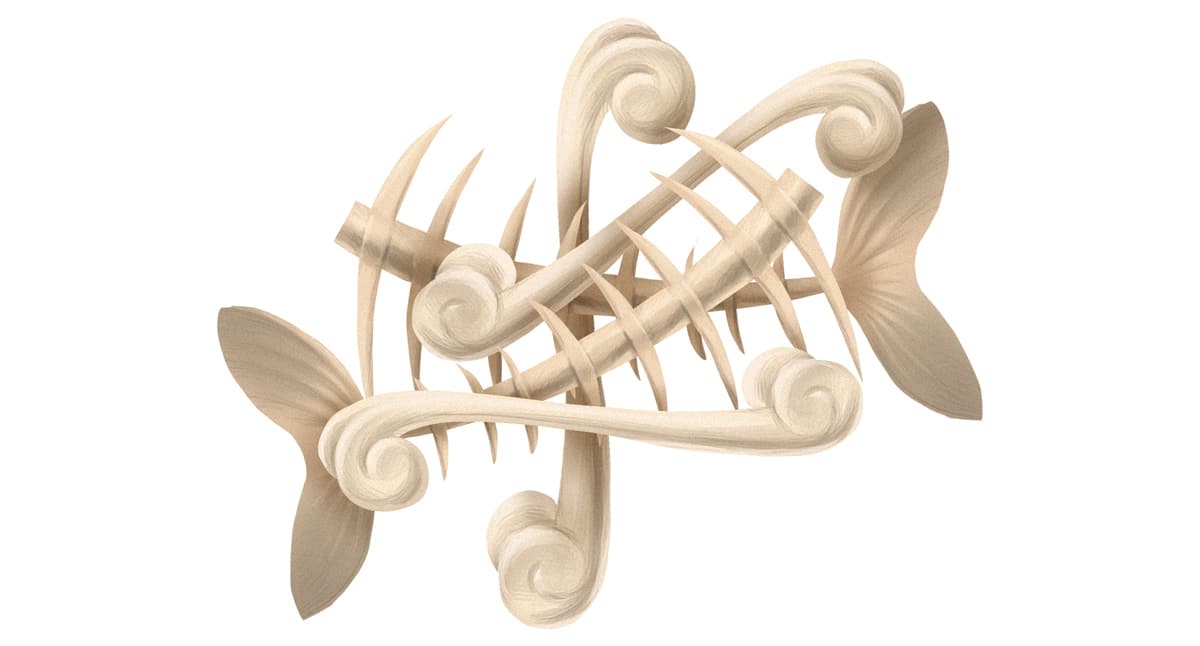If low-carb is good for weight loss, wouldn't zero-carb be best? And if plant foods so often contain toxins and gut irritants - from gluten to saponins to goitrogens - wouldn't it be reasonable to just...stop eating plants? Just eat the cow, the whole cow, and nothing but the cow?
Some people read that and think “sure, makes sense!” - other folks immediately recoil at how extreme it all sounds, and most of us are somewhere in the intrigued-but-skeptical middle. Here's a look at the carnivore diet from a Paleo perspective, including a closer look at Vilhjalmur Stefansson and the time he spent with the Inuit.
What is the carnivore diet and why would anyone do that?

The carnivore diet is exactly what it says on the tin: all animals, all the time. Some people allow small amounts of seasonings (spices, herbs, and salt) and/or drinks (coffee, tea); other people are very strict about only eating animal products.
- It’s not the same as Paleo. On Paleo, eating a variety of pre-agricultural plant foods (fruits, vegetables, spices, herbs, etc.) is encouraged because those foods are high in nutritional value and low in bad stuff, plus they're tasty and add variety.
- It’s not the same as keto or 0-carb. On keto, you can still have low-carb vegetables,and on both keto and 0-carb, you can have plant fats (olive oil, coconut oil, etc.), spices, salt, vinegar, coffee/tea, and other non-animal foods for tastiness and nutritional value. On a carnivore diet, it’s debatable whether you can have those things and whether they even count as “food,” because they don’t come from animals.
A lot of people try a carnivore diet as a last resort. They have some health problem (whether it’s anxiety, chronic pain, digestive issues, or something else), and no other diet is working. They tried Paleo, they tried keto, they tried intermittent fasting, and none of it resolved the problem, so they’re trying the meat-only life because they don’t have much to loose. And for some of those people, it works great! But that doesn't make it necessary or even healthful for the general population.
Is this a “natural” way for humans to eat?
Snake venom is 100% natural; would you eat it?
Ringworm and head lice are 100% natural; do you want them?
Those are rhetorical questions, but the point is that “naturalness” isn’t a good guide to healthfulness. Worrying about what’s “natural” or not isn’t very helpful since nobody can even agree on what’s “natural” in the first place (ask a vegan: they’ll tell you that eating meat isn’t natural for humans; ask a carnivore and they'll tell you the exact opposite).
A more useful set of questions is:
- Have people in the real world ever eaten a carnivore diet over several generations? Were they healthy? If a whole group full of different kinds of humans (men,women, adults, children, etc.) can do reasonably well on this diet, that's a good sign!
- Have any modern randomized controlled trials confirmed the safety/benefits of the diet over the long term in humans?
The answer to the second question is no, but the first question brings us to...
Vilhjalmur Stefansson and the Inuit

The most famous example of traditional hunter-gatherers eating a very low-carb diet are the Inuit - and particularly the people studied by anthropologist Vilhjalmur Stefansson in the 1900s. Stefansson lived among the Inuit for several years between 1906 and 1919. In his book The Fat of the Land, he describes their meals as “100 percent meat” (page 22), with plant foods only eaten under extremely restricted and occasional circumstances - a few berries in season, which were sometimes preserved in oil so people could eat them through the winter, and sometimes vegetable foods as a very last resort if there wasn’t any other food available (page 23).
Stefansson himself didn’t eat the diet for all that long, but the fact that plenty of apparently healthy people of all ages and both sexes were eating the diet happily for generations is a good sign. According to his book, the Inuit didn't suffer from scurvy or any of the other diseases you might expect from an all-meat diet. Despite not eating salt with their food, they didn't have sodium or electrolyte issues, and they were generally happy and in pretty robust health.
So if we're looking at hunter-gatherer groups to answer the the Paleo question of “what did humans evolve to eat,” then “almost entirely meat and fish” seems to be within the range of evolutionary “normal.”
One huge caveat about Inuit diets
One huge caveat about citing Inuit diets as justification for modern carnivory: if you’re going to point to the Inuit diet and Vilhjalmur Stefansson's book as proof of how healthful a carnivorous diet really is, you’d better also be eating something actually like the traditional Inuit diet, including raw meat, “high” (semi-rotten) meat, bones, and other traditional foods.

In his account of Inuit diets, Stefansson stresses that they ate a lot of semi-rotten meat that had been left to ferment for up to several months - this was actually considered quite the delicacy. This study explains how the fermented/semi-rotten meat was actually a critical part of the Inuit diet - it may have even been a source of vitamin C. Another paper listing sources of vitamin C in the Inuit diet focuses on raw fish (which Stefansson reports being frequently eaten) and raw animal liver. Whale skin (muktuk) is another good source of vitamin C in the traditional Inuit - but how many modern carnivores are chowing down on whale skin?
Stefansson also reported that the Inuit frequently chewed bones and ate the soft bone ends (page 75). He notes that not all the Inuit chewed bones, but at least among the ones who did, that would explain where their calcium came from. But modern carnivores who don't eat things like bone-in salmon won't have that source of nutrition, either.
So while Stefansson did insist that the Inuit eating their traditional diets didn’t get deficiency diseases, it’s not like they were eating only steaks. (Stefansson and a friend did something closer to the steaks-and-pork-chops version of carnivory in a one-year trial, but testing a diet for one year on two people doesn't prove much about the general population).
An option...but not the only option
Here’s a paragraph from the preface to Vilhjalmur Stefansson’s book, where one of his professional colleagues is discussing Stefansson's health:
“It doesn't surprise me that Stef is in good health at seventy-seven, several years after his life expectancy. We have studied a number of vegetarians of comparable age and of equally good health. What is important is that our diets provide us with adequate amounts of the many amino acids, vitamins, minerals, and fatty acids we need, plus enough energy to balance our caloric needs so that we keep our weight in the desirable range. It is also important that we enjoy what we eat.” (Page xxi).
Even Stefansson and his team didn’t think of the all-meat diet as the only appropriate human diet or the One True Diet that everyone should eat - especially if it makes you miserable.
Lots and lots of healthy hunter-gatherer groups live in a more plant-rich environment than the far north, eat a high percentage of calories from plants and do just fine. Yes, it's true that some plants have toxins and antinutrients in them - as well as fiber that can be hard to digest - but lumping all plant foods together as “bad” because some of them cause some people issues is complete overkill for almost everyone.
The carnivore diet might be a helpful therapeutic program for people who have really bad gut damage or autoimmune issues (or something else that doesn’t respond to more moderate diets), but it’s not necessary for weight loss or for general good health. Paleo-friendly plant foods like spices and vegetables are low in gut irritants and high in nutritional value - healthy adults shouldn’t have any reason to avoid them, and especially if you’re not eating a “real” traditional carnivore diet full of fermented meat from wild animals and chewed-off bone ends, plant foods probably do a lot of good.





Leave a Reply